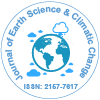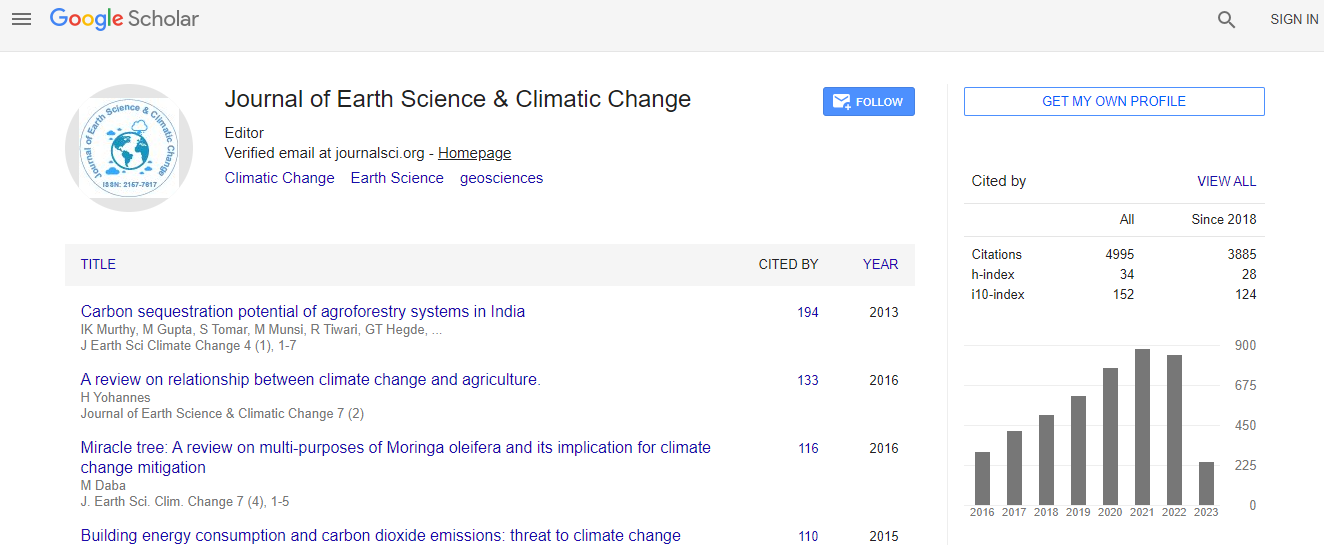Our Group organises 3000+ Global Conferenceseries Events every year across USA, Europe & Asia with support from 1000 more scientific Societies and Publishes 700+ Open Access Journals which contains over 50000 eminent personalities, reputed scientists as editorial board members.
Open Access Journals gaining more Readers and Citations
700 Journals and 15,000,000 Readers Each Journal is getting 25,000+ Readers
Google Scholar citation report
Citations : 5125
Journal of Earth Science & Climatic Change received 5125 citations as per Google Scholar report
Journal of Earth Science & Climatic Change peer review process verified at publons
Indexed In
- CAS Source Index (CASSI)
- Index Copernicus
- Google Scholar
- Sherpa Romeo
- Online Access to Research in the Environment (OARE)
- Open J Gate
- Genamics JournalSeek
- JournalTOCs
- Ulrich's Periodicals Directory
- Access to Global Online Research in Agriculture (AGORA)
- Centre for Agriculture and Biosciences International (CABI)
- RefSeek
- Hamdard University
- EBSCO A-Z
- OCLC- WorldCat
- Proquest Summons
- SWB online catalog
- Publons
- Euro Pub
- ICMJE
Useful Links
Recommended Journals
Related Subjects
Share This Page
In Association with

Empowerment of community in response to disaster: Case study of Mt. Kelud and Mt. Sinabung
5th International Conference on Earth Science & Climate Change
Supriyati Andreastuti
Center for Volcanology and Geological Hazard Mitigation, Indonesia
ScientificTracks Abstracts: J Earth Sci Clim Change
Abstract
To anticipate volcano disaster, community living around the volcano plays an important role in decision making. The way people respond to disaster depends on the ability to cope up and to take action. This behavior is influenced by their knowledge and risk perception. The large Kelud eruption on 14 February 2014 and continuing eruption of Sinabung provide experience in understanding community problem. Communities of Mt. Kelud and Mt. Sinabung represent 2 different characters in response to disaster. Well communication and collaboration between scientists (Government) with community supported by policy, and shared disaster mitigation plan will encourage active participation of community resulting in improvement of community empowerment. Equal knowledge and risk perception of community members and gradual progress of empowerment lead to strong and high awareness, as presented by Kelud community. On the other hand, uneven knowledge and different risk perception within community members and disaster mitigation officially lead to less understanding and less response during crisis as shown by Sinabung community. Evaluation and lessons learned from the eruption of Kelud and Sinabung indicate the need of policy, improvement of regulation, stakeholders management, and cooperation between government and communitity in order to gain optimum empowerment and awareness of community.Biography
Supriyati Andreastuti has joined the Center for Volcanology and Geological Hazard Mitigation, Indonesia before 25 years. She is involved in volcano research and volcano crisis including the 2010 Merapi, 2014 Kelud eruption and the reawakening and continuing activity of Mt. Sinabung in Indonesia. She worked on outreach, including formulation of contingency plan, simulation procedure (Table Top Exercise), and evacuation drill to anticipate during crisis. She is also involved in formulation of many disaster regulations.

 Spanish
Spanish  Chinese
Chinese  Russian
Russian  German
German  French
French  Japanese
Japanese  Portuguese
Portuguese  Hindi
Hindi 
